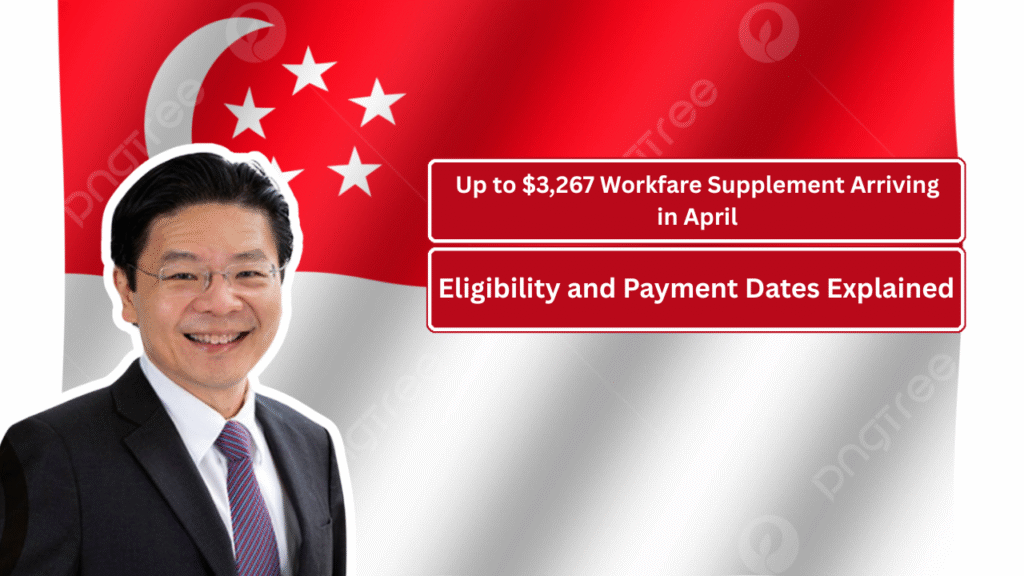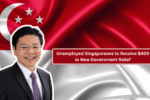Singapore’s Workfare Income Supplement (WIS) scheme is set to provide eligible lower-income workers with up to S$3,267 in annual support starting in 2025. This initiative aims to enhance financial stability and encourage long-term savings among Singaporeans.
What is the Workfare Income Supplement (WIS)?
The WIS is a government program designed to supplement the incomes of lower-wage workers and promote regular employment. It provides financial assistance through a combination of cash payments and Central Provident Fund (CPF) contributions, thereby supporting both immediate needs and future savings for retirement and healthcare.
Eligibility Criteria for the $3,267 Supplement
To qualify for the WIS in 2025, applicants must meet the following conditions:
- Citizenship: Must be a Singapore Citizen.
- Age: At least 30 years old by December 31, 2024. Persons with disabilities are eligible regardless of age.
- Income: Gross monthly income between S$500 and S$3,000 over the past 12 months.
- Property Ownership:
- Reside in a property with an annual value not exceeding S$21,000.
- Own no more than one property.
- Spousal Income (if married): Combined assessable income must not exceed S$70,000 annually.
- Work Requirement:
- Employees: Must have CPF contributions for at least 3 months in a calendar year.
- Self-employed persons: Must declare Net Trade Income (NTI) to the Inland Revenue Authority of Singapore (IRAS) and contribute to MediSave.
Special provisions are available for persons with disabilities and those on ComCare Short-to-Medium-Term Assistance, even if their income falls below the S$500 threshold.
Payment Amounts Based on Age
The maximum annual WIS payouts vary according to age group:
| Age Group | Maximum Annual Payout |
|---|---|
| 30–34 | S$1,633 |
| 35–44 | S$2,333 |
| 45–59 | S$2,800 |
| 60+ | S$3,267 |
For self-employed individuals, the maximum payouts are slightly lower, reflecting the different contribution structures.
Payment Breakdown: Cash and CPF Contributions

The WIS payments are divided between cash and CPF contributions:
- Employees:
- 40% in cash, disbursed monthly into the worker’s bank account.
- 60% credited to the CPF account, distributed among the Ordinary, Special, and MediSave accounts.
- Self-Employed Persons (SEPs):
- 10% in cash.
- 90% allocated to the MediSave account, emphasizing healthcare savings.
This structure ensures immediate financial support while promoting long-term savings for retirement and healthcare needs.
Payment Schedule for 2025
Starting in 2025, WIS payments will be disbursed monthly, approximately two months after the work month:
| Work Month | Payment Date |
|---|---|
| January | End of March |
| February | End of April |
| March | End of May |
| April | End of June |
| May | End of July |
| June | End of August |
| July | End of September |
| August | End of October |
| September | End of November |
| October | End of December |
| November | End of January (following year) |
| December | End of February (following year) |
Payments are made via PayNow (linked to NRIC) or GovCash for those without bank accounts.
How to Apply
For employees, no application is necessary. Eligibility is automatically assessed based on CPF contributions made by employers.
Self-employed individuals must:
- Declare Income: Submit Net Trade Income (NTI) via the IRAS myTax Portal.
- Contribute to MediSave: Make the required MediSave contributions based on age and income.
Once these steps are completed, the CPF Board will automatically assess eligibility and disburse payments accordingly.
Additional Resources
For more information, individuals may refer to:
- Workfare Income Supplement (WIS) official site
- CPF Board
- IRAS myTax Portal
- CPF WIS Calculator for personalized estimates
Conclusion
The enhanced WIS scheme reflects Singapore’s ongoing commitment to supporting lower-income workers. By offering monthly payouts and encouraging MediSave contributions, the scheme aims to balance short-term relief with long-term financial well-being. Eligible Singaporeans are encouraged to ensure their CPF records and income declarations are up to date to receive their full benefits in 2025.




